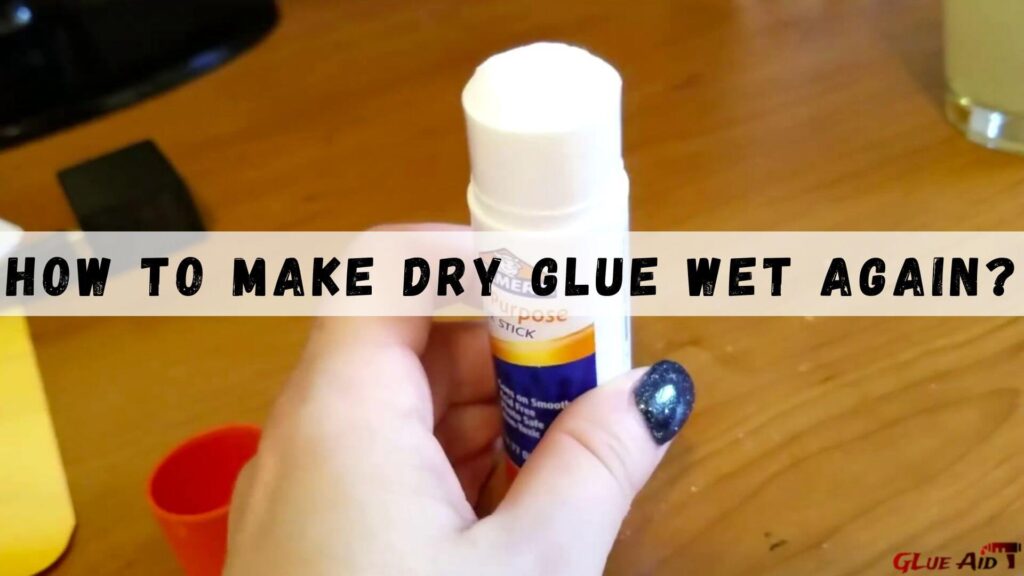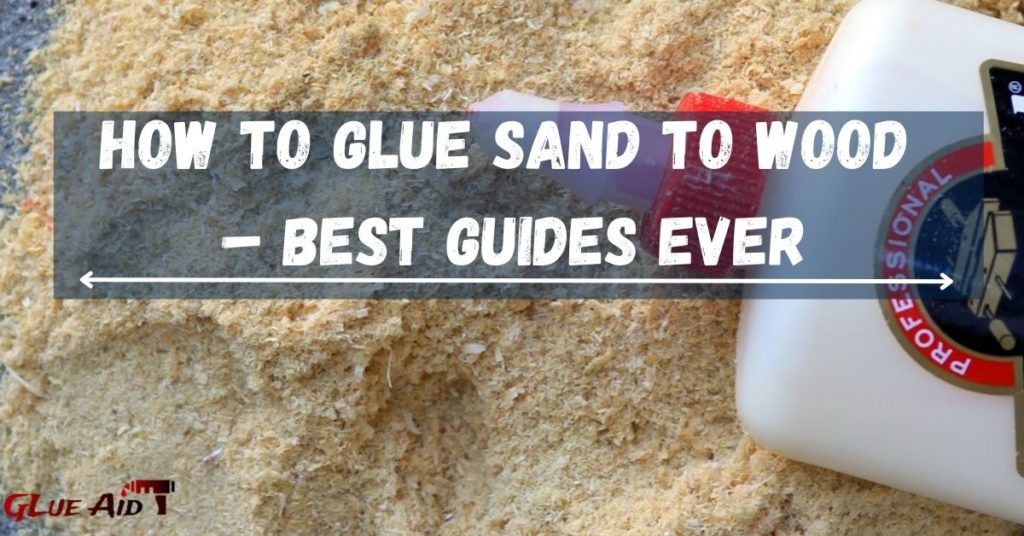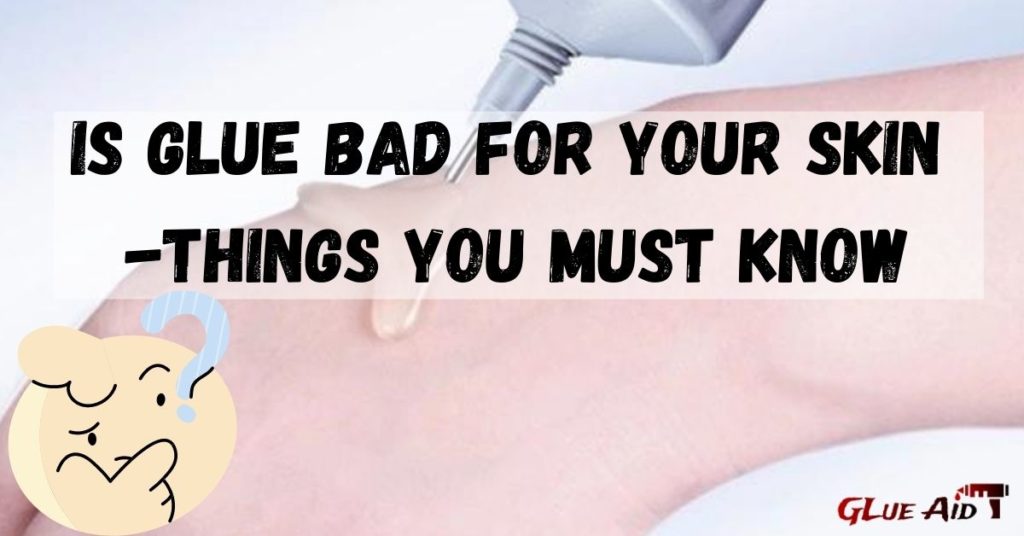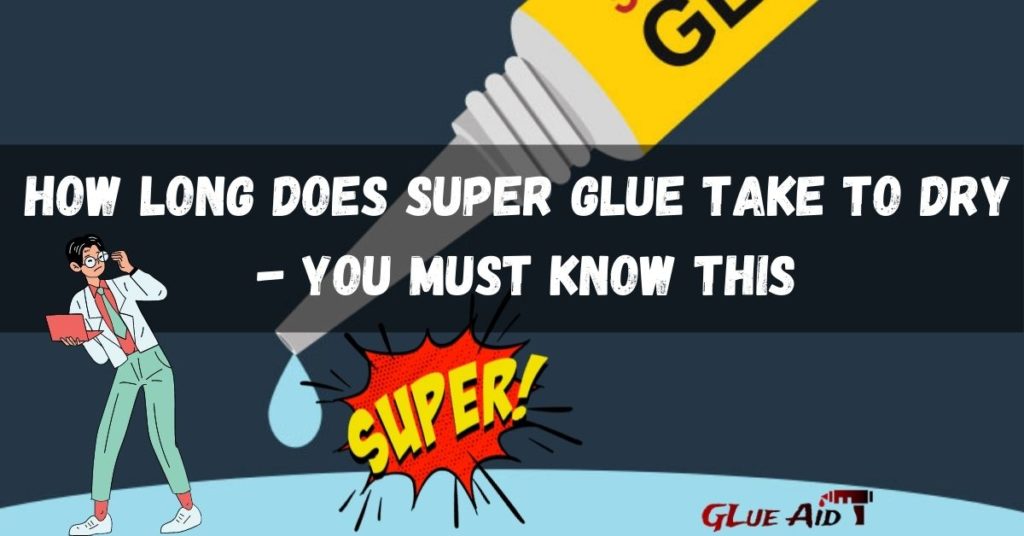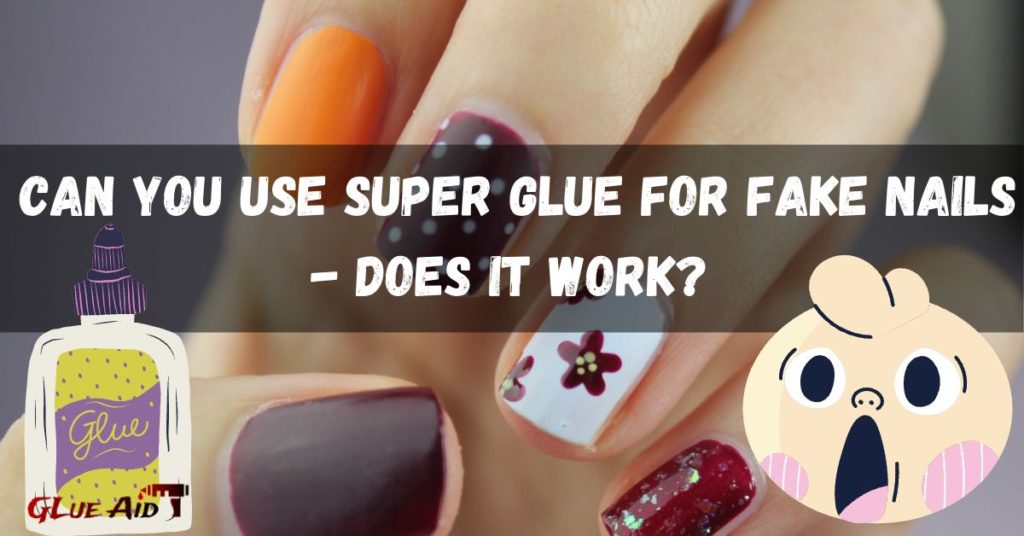Whether you’re a crafter or a student, there are times when you need glue but can’t find any wet glue. All you have is a dried-up bottle of white school glue. You might think your only option is to run to the store and buy more, but there’s a way to make your dry glue wet again. With just a few simple ingredients, you can have working glue in no time. In this article, we will learn how to make dry glue wet again.
Table of Contents
How Does Glue Dry?
When you think of glue, you probably think of the sticky white substance that is used to hold things together. But have you ever wondered how glue dries?
It’s actually pretty simple. The ingredients in glue are water, resin, and a hardening agent. The water evaporates, leaving behind the resin and hardening agent. The hardening agent then causes the resin to harden, and voila! Your glue is dry.
Of course, it’s not quite that simple. The type of resin and hardening agent used will affect how quickly the glue dries. For example, superglue dries very quickly because it uses a different type of resin than regular glue.
How To Fix Glue That’s Dried In The Container?

When you buy a new bottle of glue, you expect it to last for several projects. But sometimes, the glue can dry out in the container before you’ve even used it. If this happens, don’t despair—there are a few ways to fix the problem.
One way to fix dried-out glue is to add a few drops of water. Screw the lid back on and shake the container well. Then, try using the glue as usual. If it’s still too thick, add a few more drops of water and repeat the process.
Another way to fix dried-out glue is to microwave it for 10-20 seconds. This will help re-liquify the glue so that it’s easier to use. Just be careful not to microwave it for too long, or the bond will become too runny.
The Benefits Of Using Wet Glue Over Dry Glue

There are many benefits to using wet glue over dry glue. Wet glue is less likely to cause wrinkles in your paper and provides a stronger bond. Wet glue is also less likely to bleed through your paper, and it dries clear.
Another benefit of wet glue is that it’s easier to control. You can apply wet glue directly to your project with a brush or sponge, and you can evenly distribute the adhesive. With dry glue, you have to be more careful not to apply too much pressure, which can result in wrinkling.
Finally, wet glue is less expensive than dry glue. You can find wet glue at any craft store, and it will last for years. Dry glue is more expensive and can be difficult to find.
How To Store Your Glue So That It Stays Wet
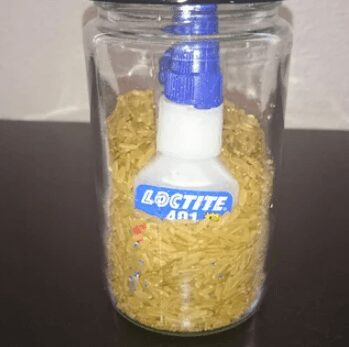
If you’re somebody who likes to do a lot of arts and crafts, you know that one of the most essential tools you need is glue. But what happens when your glue starts to dry out and gets clumpy? Here are a few tips on how to store your glue so that it stays wet.
- Keep it in a cool, dark place. Glue doesn’t like heat or light, so storing it in a dark cupboard or drawer is ideal.
- Store it in an airtight container. This will help keep the moisture in and the air out.
- If you’re using a bottle of glue, make sure to screw the lid on tight after each use. This will also help keep the moisture in and prevent the glue from drying out.
- Use it before the expiration date on the package. If you have glue that has reached its expiration date, buy a new bottle! It’s not worth trying to save a little money by using old glue.
- Don’t store your glue in the fridge or freezer.
How To Prevent Glue From Drying In The Container?
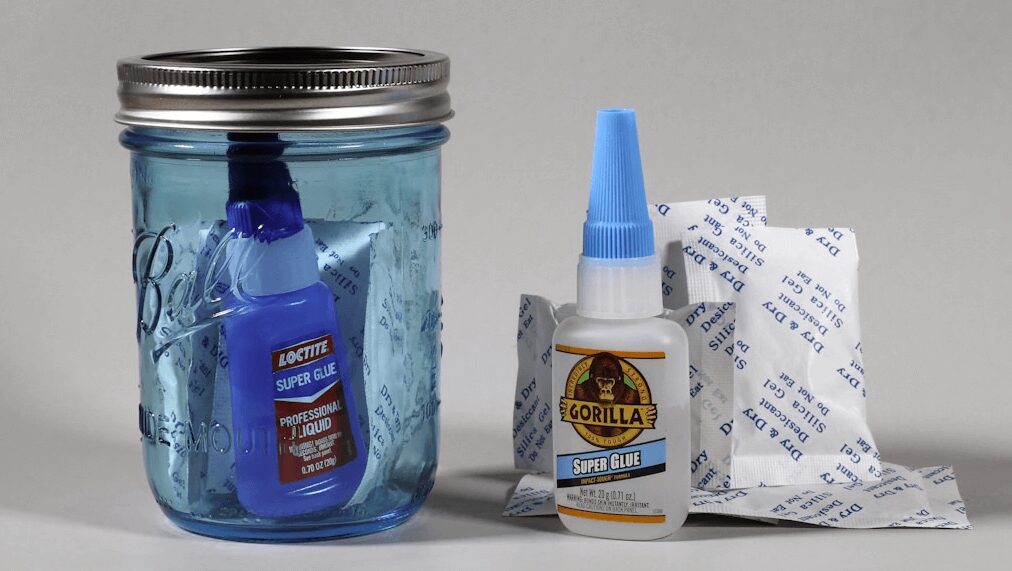
Here are a few tips to prevent your glue from drying out so you can keep crafting away!
First, make sure you screw the lid on tightly after each use. It might seem like a no-brainer, but if the lid isn’t secure, air will get in and start to dry out the glue.
Another tip is to store your glue in a cool, dark place. Excess heat or light can also cause the glue to dry out prematurely.
Finally, if you find that your glue has already started to dry out, there’s no need to toss it – just add a few drops of water and stir.
How To Soften Glue That’s Dried On A Surface?
Glue can dry on a surface and become difficult to remove. Here are a few tips on how to soften and remove dried glue from a surface:
- Soak a cloth in warm water and apply it to the dried glue. The heat will help soften the glue so that it can be removed more easily.
- Use a blunt object like a spoon or spatula to scrape away the softened glue.
- If the above methods don’t work, you can try using acetone or nail polish remover. Apply a small amount of acetone to a cloth and rub it onto the dried glue.
How To Restore Dried Glue Sticks?
If you have ever tried to use a dried-out glue stick, you know it can be frustrating. Here are a few tips on how to restore your dried-out glue sticks so you can get back to your project.
To start, try microwaving the glue stick for about 10 seconds. This will soften the glue and make it easier to use. If that doesn’t work, you can try soaking the glue stick in warm water for a few minutes.
Once the glue is softened, you should be able to use it like normal. If not, you may need to replace the dried-out glue stick with a new one.
How Can I Soften Gorilla Glue When It Has Hardened in the Bottle?
If you have ever tried to use a dried-out glue stick, you know it can be frustrating. Here are a few tips on how to restore your dried-out glue sticks so you can get back to your project.
To start, try microwaving the glue stick for about 10 seconds. This will soften the glue and make it easier to use. If that doesn’t work, you can try soaking the glue stick in warm water for a few minutes.
Once the glue is softened, you should be able to use it like normal. If not, you may need to replace the dried-out glue stick with a new one.
Tips For Using Wet Glue In Your Projects
One of the great things about wet glue is that it can be used on a variety of surfaces. However, there are a few things you should keep in mind when using it.
- First, wet glue is best used on porous surfaces. That means that it won’t work as well on plastic or glass. If you’re using it on something like cardboard, make sure that the surface is clean and dry before you start.
- Second, wet glue dries quickly, so you need to work fast. Have all of your materials ready to go before you start applying the glue.
- Finally, wet glue can be messy. Be sure to have some paper towels or cloth nearby to wipe up any accidental spills.
With these tips in mind, you’re ready to start using wet glue in your projects!
FAQs About How To Make Dry Glue Wet Again?
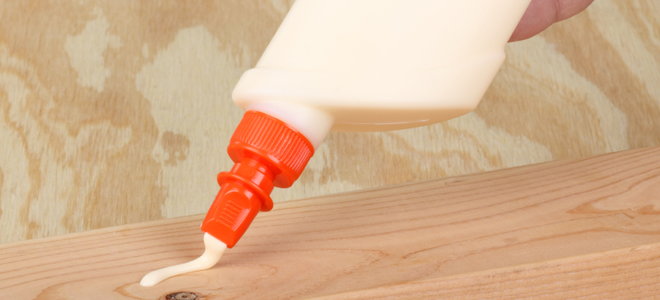
How To Make Dry Nail Glue Wet Again
The process of making dry nail glue wet again is actually quite simple. First, take the dry nail glue and add a few drops of water to it. Then, using a toothpick or other small object, mix the water and glue together until it forms a paste. Once the paste is formed, apply it to your nails and wait for it to dry.
How To Make Dry Super Glue Wet Again
To make dry superglue wet again, one must first understand the chemical composition of the glue. Super glue is made up of cyanoacrylate monomers which react with each other to create long chains. These chains are what give the glue its strength. In order for the glue to become wet again, the chains must be broken down into their individual monomers. This can be done by adding a solvent such as acetone.
How To Make Dry Glue Stick Wet Again
If your glue has dried out, you can rehydrate it by adding a few drops of water. Give the glue a few minutes to absorb the water, then mix it thoroughly before using it.
How To Make Dry Hair Glue Wet Again
When hair glue dries, it becomes hard and brittle. To make it wet again, you need to rehydrate the glue. The best way to do this is to use a solvent. Solvents can be applied directly to the glue, or they can be used to dissolve the glue. Once the glue is dissolved, it can be reapplied to the hair.
How To Make Dry Eyelash Glue Wet Again
Dry eyelash glue can be made wet again by adding a few drops of water to the dried glue and stirring it until the desired consistency is achieved. This process can be repeated as needed to maintain the glue’s wetness.
How To Make Dry Fevicol Wet Again
Adding water to dry Fevicol will make it wet again. The amount of water needed will depend on the size and type of container the Fevicol is in. If the container is small, you may only need to add a few drops of water.
How To Make Liquid Glue Dry Faster
There are a few ways to make liquid glue dry faster. One way is to apply heat to the glued area. This can be done with a hair dryer, by running a hot iron over the area, or by using a heat lamp. Another way is to increase the airflow around the glued area. This can be done by fanning the area or by opening a window. Finally, you can add a drying agent to the glue.
How Long Does It Take For Wet Glue To Dry
The amount of time it takes for wet glue to dry varies depending on the type of glue and the humidity of the environment. Generally, it takes 24 hours for wet glue to completely dry. However, in humid environments, it can take up to 72 hours for wet glue to dry completely.
Last Words
If you have dried out glue, there are a few different methods you can use to make it wet again. By adding water, using a humidifier, or microwaving the glue, you can get your glue back to its original consistency. Give one of these methods a try the next time your glue has dried out!
Relevant Resources:
- What Glue to Use for Paper Glass
- How To Dry Glue Faster – 9 Best Ways
- How to Fix a Hole in an Air Mattress With Super Glue
- Why Doesn’t Glue Stick to The Inside of The Bottle or Tube
- The Pros and Cons of Polyurea Adhesives
- Is Glue Edible? – See What Experts say
- Is Glue bad for your Skin -Things You Must Know
- How To Glue Sand to Wood – Best Guides Ever
- How to Glue Glass to Wood
- How to Glue Rubber to Wood
- How to Glue Metal to Glass
- How to Get Hair Glue out of Carpet
